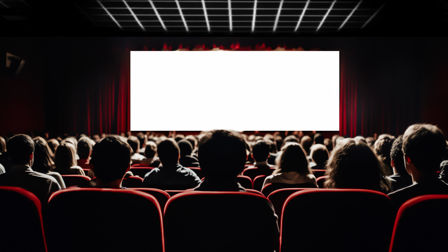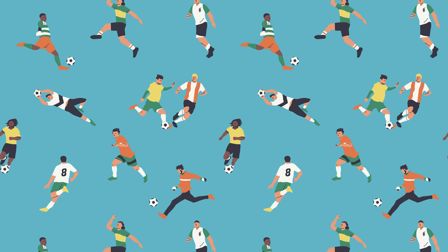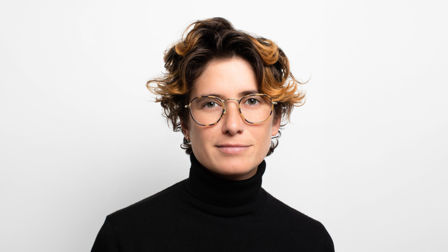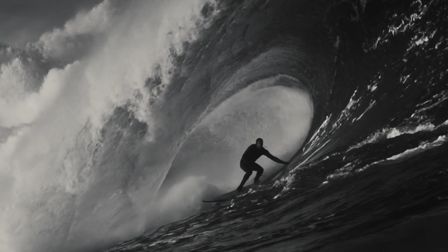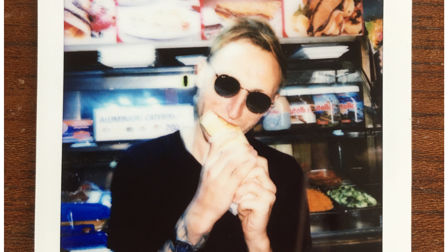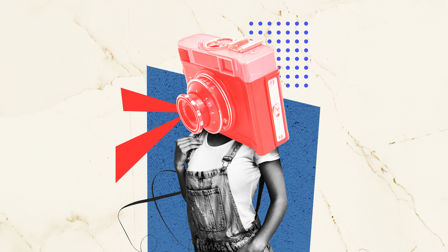How to… craft invisible CGI
Kicking off our Animation Focus, Carsten Keller, Head of CG at Moving Picture Company’s London studio, talks us through some of the ways that CG can replace live-action when needed.
In a time where live action shoots have become difficult or even impossible to do in certain countries, many have been discussing how animation and photorealistic CGI (or invisible CGI) can be a viable and achievable alternative.
For those wishing to demonstrate the real-life properties of a product, environment, or even characters; photoreal CGI can be used to create content for any medium be it print, digital, social or TV ads. And in our current situation, it is a great solution that can allow brands to create content completely remotely.
Our eyes are so well trained to the way a real camera would move, that the instant you do something different, it throws everything off and it becomes obvious that what you’re looking at is not real.
CGI artists are adept at creating pretty much anything you can imagine. At MPC, we have tackled worlds both realistic and fantastical, a myriad of characters, products, cars, water animation and more all in CG. And, thanks to incredible technology teams, you can now achieve studio-quality standard work from any location.
So if you’re looking to craft every pixel in CG, what do you need to know?

Credits
powered by
Apply On-Set Experience
The funny thing about creating stuff in CG, remotely or otherwise, is that while you have all the freedom in the world to be as imaginative as you like but at the end of the day, you are still ruled by reality.
Our eyes are so well trained to the way a real camera would move, that the instant you do something different, it throws everything off and it becomes obvious that what you’re looking at is not real. So the key to truly invisible CGI is tied to the physical world.
An understanding of how photography and filming works in a physical environment is indispensable for achieving realism in CG.
It’s the years spent on-set that has allowed many of our CG artists at MPC to deliver the photorealistic work we are known for.
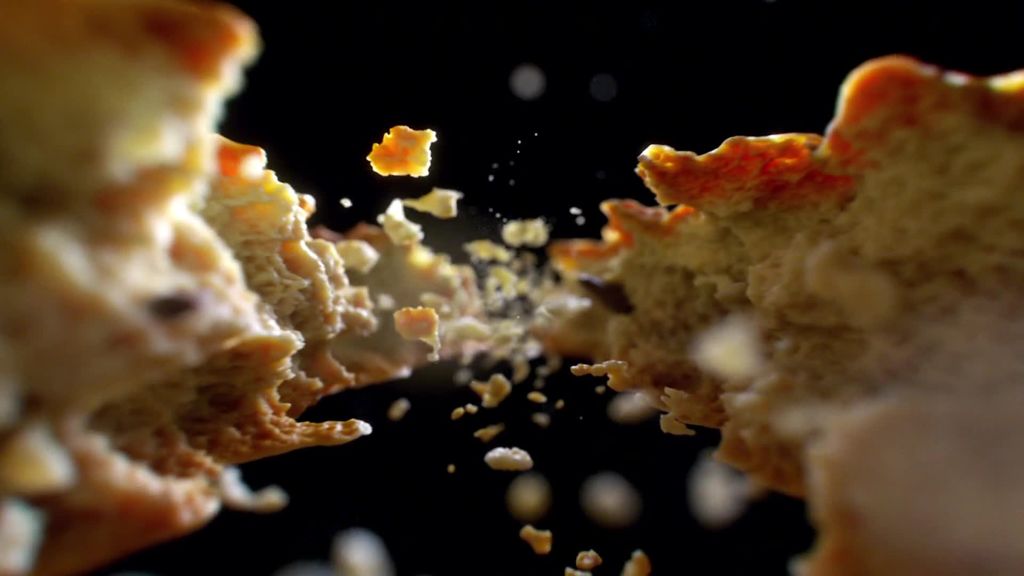
Credits
powered by
Technology has even come on so much that we are now able to create virtual sets in CGI that allow us to speed up the review and approval process. Using VR we can now put whole teams of people ‘inside’ an ad and allow them to walk around the environment and the product. The benefit of this is that you can choose the perfect camera angles and shots in real time with your CG artist, director and client at once rather than going back and forth over shots.
Using VR we can now put whole teams of people ‘inside’ an ad and allow them to walk around the environment and the product.
We originally used this process with Jon Favreau when creating The Lion King but realised how valuable it could be in a time of remote working.
One team can digitally be in the same place at the same time.

Olivier Rousteing, Creative Director at Balmain, wearing a VR headset for the My City of Lights project.
Products: Study the Physics and Recycle
Products - such as cars, phones, food and luxury goods - are perhaps one of the things that photorealistic CGI is frequently used for. This is because by developing in CGI allows complete control and customization of the product. It can always be displayed exactly as imagined.
Once a product has been created in CGI it can be replicated for use in multiple ads.
These days most products come with very detailed specs so, even before lockdown, it wasn’t always necessary for us to handle or see the product in real life. On the occasion where product specs are not available, we are able to gather ample resource information we can use to inform the way we design the product. Then, with software, we are able to define the minutiae of physical detail from viscosity, to elasticity, density, durability and much more. It can simulate any real material perfectly without us having to touch it.
The other huge benefit of doing this is that once a product has been created in CGI it can be replicated for use in multiple ads, saving precious time and money on re-shooting each time.

Credits
powered by
One example is with CGI food. Shooting food live action can be incredibly time consuming and involve many people. It can be challenging to keep the food looking appetizing over the course of a shoot day.
Imagine an ice cream shoot, the food stylist would typically need to create several versions of the product to swap in as the shoot goes on and the ice cream melts under hot studio lights. That’s why it can often be quicker and more affordable to create the product in CG, and consult with a food stylist where needed.
In CG we can control colour, lighting, camera angles and ensure the item always looks best, sometimes even better than the real thing!
These days car manufacturers can release the CAD files of the car under NDA so CG artists can build every part of the car exactly as it would be in real life, without having to see it.
Many products can be completed in a matter of days with a proper brief, even remotely. Although it may look complicated, cars are in fact one of the simplest things to recreate photorealistically.
These days car manufacturers can release the CAD files of the car under NDA so CG artists can build every part of the car exactly as it would be in real life, without having to see it. This is a process most CG artists will be very used to in order to keep the secrets of new car models completely under wraps before they launch. And this also allows clients to have complete customization of colour, interior and plates all can be easily adapted and the car then placed into a new ad.
Again, all without a need for an entire new shoot or even a physical car to be available.

Credits
powered by
Environments: You Don’t Need To Be There
Fully photorealistic CGI environments are perhaps the most time-intensive things to create, depending on the length of the ad and the detail required, but in today’s climate they are a great alterative as we can develop full cityscapes without any travel or shoot.
You have the ability to create all sorts of environments from outdoor landscapes to interiors. For example, at MPC we have world-building and environment teams that collate tons of research and photos to draw inspiration from - that’s what we did for the African jungles in The Lion King and how we worked with Ridley Scott’s worlds of flavour for Hennessy.
It all depends on your narrative and budget. If you want to bring the budget down a bit, there are ways around it by opting for stock photos, painted backgrounds or using a locked camera shot.
Credits
powered by
- Agency DDB/Paris
- Production Company RSA Films
- Director Ridley Scott
-
-
Unlock full credits and more with a Source + shots membership.
Credits
powered by
- Agency DDB/Paris
- Production Company RSA Films
- Director Ridley Scott
- Creative Director Pierre Mathonat
- Creative Director Alexis Benbehe
- Executive Creative Director Alexander Kalchev
- Producer Quentin Moenne Loccoz
- Production Co. Soixante Quinze
- Post Production MPC/Paris
- Post Production MPC/Paris
- Music The
- Sound Design Grand Central Recording Studios
- Executive Producer Debbie Garvey
- Producer Annabelle Fournier
- Producer Lida Ordnungova
- Production Designer Marc Homes
- DP Dariusz Wolski
- Editor Jim Weedon | (Editor)
- Colourist Stephen Nakamura
- Creative Director Ryan Jefferson Hays
- Post Producer Tomek Zietkiewicz
- 3D Supervisor Boyo Frederix
- Head of VFX Selcuk Ergen
- Head of CG Carsten Keller
- 2D Supervisor Rod Norman
- Composer Daniel Pemberton
- Music Jerome Alquier
- Sound Designer Oliver Tarney
- Sound Designer Raja Sehgal
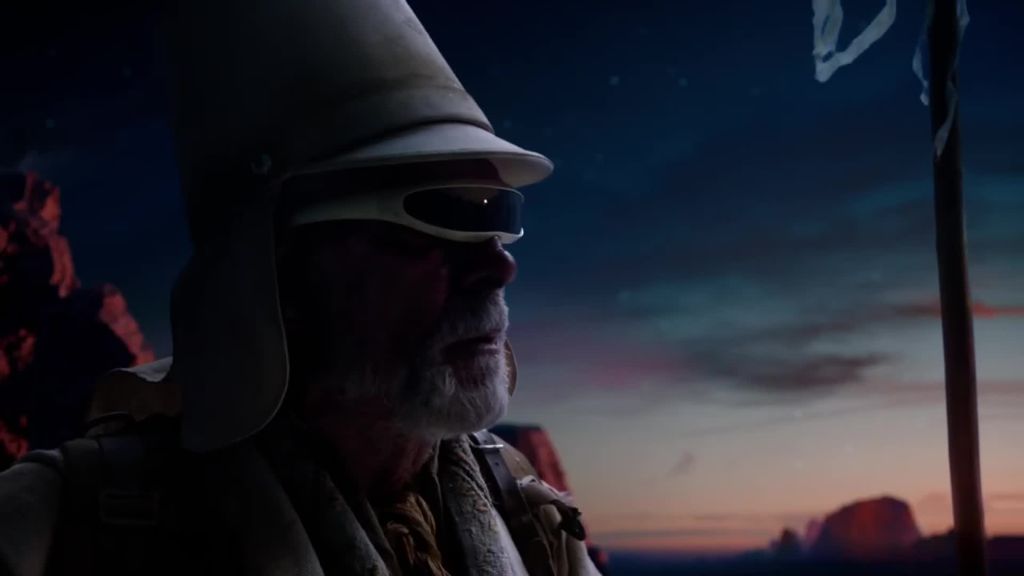
Credits
powered by
- Agency DDB/Paris
- Production Company RSA Films
- Director Ridley Scott
- Creative Director Pierre Mathonat
- Creative Director Alexis Benbehe
- Executive Creative Director Alexander Kalchev
- Producer Quentin Moenne Loccoz
- Production Co. Soixante Quinze
- Post Production MPC/Paris
- Post Production MPC/Paris
- Music The
- Sound Design Grand Central Recording Studios
- Executive Producer Debbie Garvey
- Producer Annabelle Fournier
- Producer Lida Ordnungova
- Production Designer Marc Homes
- DP Dariusz Wolski
- Editor Jim Weedon | (Editor)
- Colourist Stephen Nakamura
- Creative Director Ryan Jefferson Hays
- Post Producer Tomek Zietkiewicz
- 3D Supervisor Boyo Frederix
- Head of VFX Selcuk Ergen
- Head of CG Carsten Keller
- 2D Supervisor Rod Norman
- Composer Daniel Pemberton
- Music Jerome Alquier
- Sound Designer Oliver Tarney
- Sound Designer Raja Sehgal
The other thing you can do remotely is digital location scouting. This is typically used when a production doesn’t have the time/budget/ability to travel to their chosen film location.
We can explore a location with a client, agree on what we want from it and then build it out to the agreed upon design.
It works a bit like Google Street View - we can digitally walk through different cities across the globe to see how they look from different angles and at certain times of day. Now we can use this to explore locations that we might want to recreate entirely in CG.
Moving forward, we can explore a location with a client, agree on what we want from it and then build it out to the agreed upon design. And it can be completely realistic so that to the viewer they will believe this was all shot on location.
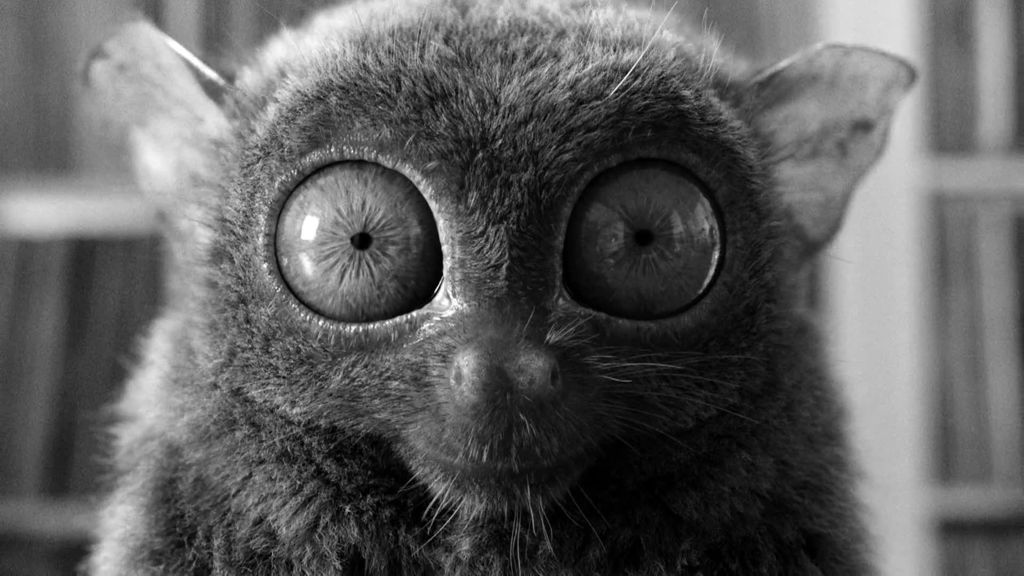
Credits
powered by
People and Creatures: Scanning or Sculpting, It Can Be Done
Typically photoreal creatures or characters could come in as one of the more time consuming options for most CGI companies but they are in completely possible to create in uncanny reality whilst working remotely. To get these right it can take months of research as we want to get the character exactly right.
At MPC, we have created so many photoreal creatures over the years, we now have whole libraries of animals on hand that go into great detail on skeletons, muscles, feathers, fur, scales and more. Depending on budget, you can create an animal or character from scratch or you can use something based off of what's in the library.
Some digital artists work in the same way that a fine art sculptor would and can recreate characters digitally from scratch using reference material.
For celebrities or specific people, CG artists will typically work from a 3D scan of the person. Although obtaining a scan in lockdown may not be feasible, if it’s someone who has been scanned recently before, we can use that reference material. But if you’re unable to obtain a scan at this time, it doesn’t mean you’re out of options. Some digital artists work in the same way that a fine art sculptor would and can recreate characters digitally from scratch using reference material.
Credits
powered by
- Agency Adam & Eve -DDB
- Production Company Academy
- Director Seb Edwards
-
-
Unlock full credits and more with a Source + shots membership.
Credits
powered by
- Agency Adam & Eve -DDB
- Production Company Academy
- Director Seb Edwards
- Post Production MPC/London
- Producer Shirley O'Connor
- Production Manager Rachael Donson
- Executive Producer Simon Cooper
- DP Chayse Irvin
- Production Designer Robin Brown
- Editor Sam Rice-Edwards
- Creative Director/Founder Anthony Moore
- VFX Kamen Markov
- VFX Producer Philip Whalley
- CG Supervisor Anthony Bloor
- CG Team Anthony Bloor
- CG Team Jessie Amadio
- CG Team Tom Carrick
- CG Team Charles Downman
- CG Team David Bryan
- 2D Team Kamen Markov
- 2D Team Jack Stone
- 2D Team Kalle Kohlstrom
- 2D Team Bevis Jones
- 2D Team Anthony Bloor
- Chief Creative Officer Richard Brim
- Executive Creative Director Ben Tollett
- Executive Creative Director Mike Sutherland
- Executive Creative Director Antony Nelson
- Producer Sally Pritchett
- Talent Elton John
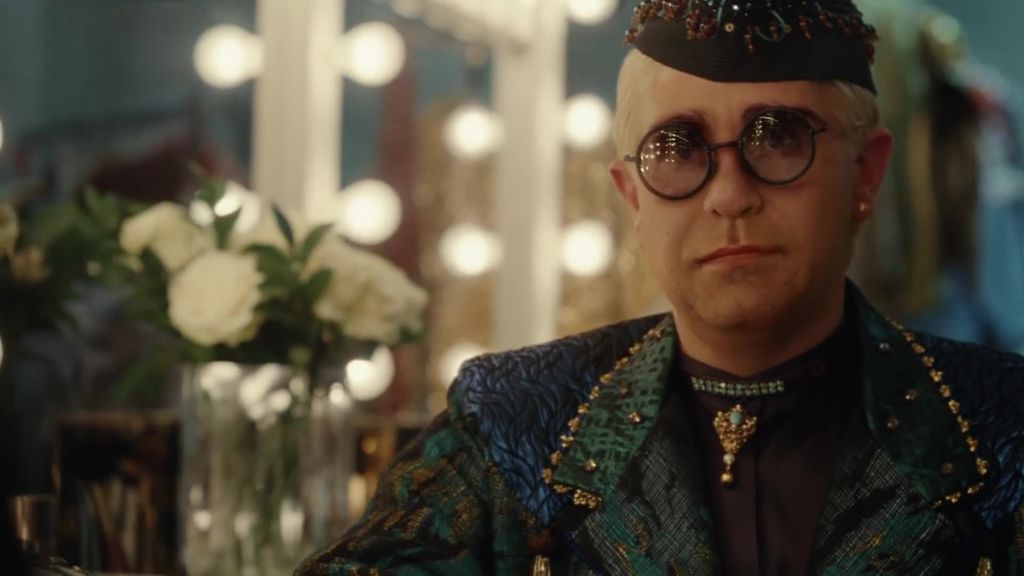
Credits
powered by
- Agency Adam & Eve -DDB
- Production Company Academy
- Director Seb Edwards
- Post Production MPC/London
- Producer Shirley O'Connor
- Production Manager Rachael Donson
- Executive Producer Simon Cooper
- DP Chayse Irvin
- Production Designer Robin Brown
- Editor Sam Rice-Edwards
- Creative Director/Founder Anthony Moore
- VFX Kamen Markov
- VFX Producer Philip Whalley
- CG Supervisor Anthony Bloor
- CG Team Anthony Bloor
- CG Team Jessie Amadio
- CG Team Tom Carrick
- CG Team Charles Downman
- CG Team David Bryan
- 2D Team Kamen Markov
- 2D Team Jack Stone
- 2D Team Kalle Kohlstrom
- 2D Team Bevis Jones
- 2D Team Anthony Bloor
- Chief Creative Officer Richard Brim
- Executive Creative Director Ben Tollett
- Executive Creative Director Mike Sutherland
- Executive Creative Director Antony Nelson
- Producer Sally Pritchett
- Talent Elton John
We used a mixture of these methods on John Lewis’ Christmas ad with Sir Elton John. For his present-day self we could scan him to gather all the reference material needed but when we came to recreating his younger selves, we didn’t have the same option. Whilst his skull and general proportions were unchanged, his skin and muscle tone were different at every stage. In these cases, we 3D modelled him from scratch.
We may be in physical lockdown, but digitally, anything is still possible.
Once the person has been modelled, a face rig is applied to trigger muscles that should move when talking, singing, laughing, crying - hundreds of different movements that come together to form the animation.
Big teams can turn projects like this around in just a few months - remote or in the office.

Credits
powered by
Anything is possible
CGI is an incredible craft with such a range of possibilities that are able to be achieved remotely.
Now more than ever, we can truly begin to appreciate the tools at our fingertips, helping us recreate the world around us, even when we are cut off from it.
We may be in physical lockdown, but digitally, anything is still possible.
)








